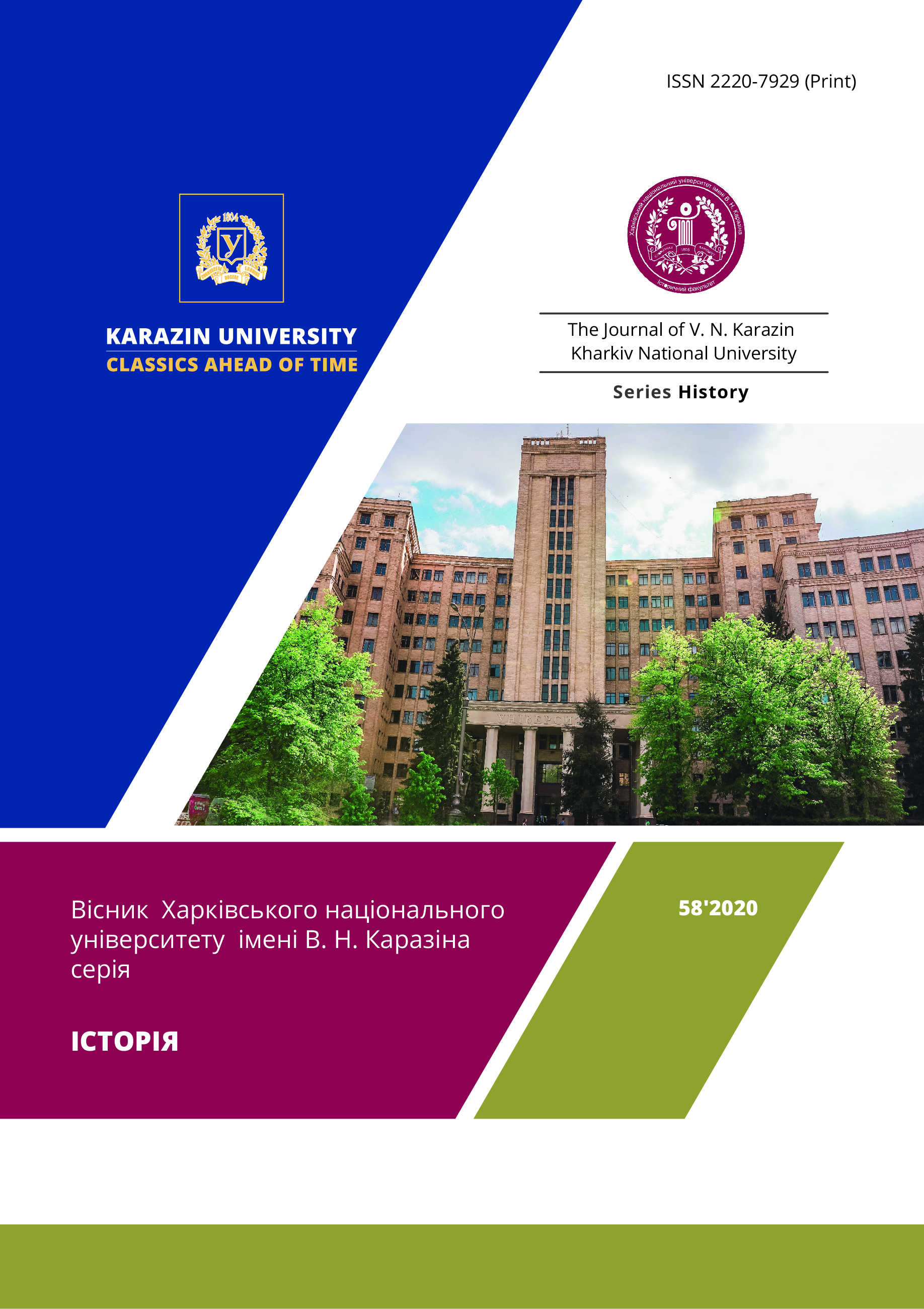Labor Dynasty as a Metaphor
Abstract
The article analyzes the origins and evolution of the metaphor of “labor dynasty” in the Soviet discourse. In the era of the first five-year plans, the Soviet government made a strong effort to emphasize the elite status of workers. At this time, party officials used a genealogical approach to label “us” and “others.” A person with the status of “hereditary proletarian” was deemed more politically credible. At the turn of the 1930s, “hereditary proletarians” were opposed in public rhetoric to the “workers’ aristocracy” – skilled workers who resisted the regime and negatively influenced the “masses” of new laborers. This term was not used anywhere outside trade union censuses and special works on the history of the structure of the working class in the USSR. Therefore, we may consider this metaphor “dead” (P. Ricker). In the 1930s and the following decades, a secularized cult of the worker’s labor took shape. It had its own pantheon and memorials. Part of this process was the creation of practices for the representation of manual labor as honorable. Appropriate linguistic tools and metaphors emerged to describe the new status of the proletariat, reflecting the spirit of social change. They were recorded in dictionaries. Thus, in the late 1940s, the word “dynasty” is given two meanings in S. Ozhegov’s dictionary, one of which was “workers who consistently pass on from generation to generation their skills and labor traditions.” In this way, semantic innovation took place. The “labor dynasty” metaphor became entrenched during the 1950s to 1980s. It found active use in journalistic discourse. Articles and essays were published on this subject, documentaries were made, theme museums were opened, pan-Union congresses of representatives of labor dynasties were held, etc. The formation and perpetuation of a pattern of labor relations modeled on the family was designed to promote discipline and prevent labor conflicts.
Downloads
References
Ankersmit, F. R. Istoriia i tropologiia: vzlet i padenie metafory. Moskva, 2003. (In Russian)
Dal', V. Tolkovyy slovar' zhivogo velikorusskogo iazyka. Available at: <http://slovardalja.net/word.php?wordid=6404> [Accessed: 20 May 2020]. (In Russian)
Dmitrienko, M. Tam, na shakhte ugol'noi. Kiev, 1972. (In Russian)
Dolganov, V. A. I dukh nash molod: ocherki. Khar'kov, 1988. (In Russian)
Fitspatrik, Sh. Sryvaite maski!: Identichnost' i samozvanstvo v Rossii ХХ veka. Moskva, 2011. (In Russian)
Fomenko, A. A. Aganichevy – rod izvestnyi. Sverdlovsk, 1971. (In Russian)
Ganiushkin, V. A. Rabochaia dinastiia. Moskva, 1961. (In Russian)
Inglin, A. Dinastiia Sorokinykh. Leningrad, 1969. (In Russian)
Ivanova, N. A. Struktura rabochego klassa Rossii. 1910–1914. Moskva, 1987. (In Russian)
Khoffmann, D. L. Vzrashchivanie mass. Modernoe gosudarstvo i sovetskii sotsializm 1914–1934. Moskva, 2018. (In Russian)
Kinolitopis. Anotovanii kataloh kinozhurnaliv, dokumental'nykh fíl'miv, kino- i telesiuzhetiv (1976–1985). Kiiv, 2015. (In Ukrainian)
Kovbel', I. N. Pocherk rabochikh dinastii. Kishinev, 1981. (In Russian)
Losev, P. Dinastiia Solov'evykh. Iaroslavl', 1949. (In Russian)
Liubavskyi, R. Stratehii poshuku zhytla robitnykamy u 1920-ti rr. (na prykladi Kharkova). Naukovi zapysky NaUKMA. Istorychni nauky [NaUKMA Research Papers. History], t. 3, 2020, s. 24–29. DOI: 10.18523/2617-3417.2020.3.24-29. (In Ukrainian)
Mishin, N. V. Avtograf na metalle. Khar'kov, 1978. (In Russian)
Ozhegov, S. I. Slovar' russkogo iazyka. Available at: <https://slovarozhegova.ru/word.php?wordid=6621> [Accessed: 20 May 2020]. (In Russian)
Rashin, A. Sostav fabrichno-zavodskogo proletariata SSSR. Predvaritel'nye itogi perepisi metallistov, gornorabochikh i tekstil'shchikov v 1929 g. Moskva, 1930. (In Russian)
Rikér, P. Zhivaia metafora. Sed'moi ocherk: metafora i referentsiia. HORIZON. Fenomenologicheskie issledovaniia [HORIZON. Studies in Phenomenology], t. 4, no. 1, 2015, s. 175–219. DOI: 10.18199/2226-5260-2015-4-1-175-219. (In Russian)
Selishchev, A. M. Iazyk revoliutsionnoi epokhi: Iz nabliudenii nad russkim iazykom poslednikh let (1917–1926). Moskva, 1928. (In Russian)
Tkach, O. A. Zavodskaia dinastiia kak sotsiokul'turnyi fenomen: sovetskii i postsovetskii periody. Avtoreferat dissertatsii na soiskanie uchenoi stepeni kandidata sotsiologicheskikh nauk. Sankt-Peterburg, 2008. (In Russian)
Trunov, I. A. Komarovy-dinastiia rabochaia. Gor'kii, 1968. (In Russian)
Vernikov, S. M. Deviat' iz odnogo tsekha. Sverdlovsk, 1972. (In Russian)
Vzhosek, V. Istoriografiia kak igra metafor: sud'by «novoy istoricheskoi nauki». V sb.: Odissey: Chelovek v istorii. Kul'turno-antropologicheskaia istoriia segodnia. Moskva, 1991, s. 60–74. (In Russian)
Vzhosek, V. O smysle i naznachenii metafory v gumanitarnykh naukakh (Metaforizirovanie kak tip interpretirovaniia). Istoriia i sovremennost' [History and Modernity], no 2, 2005, s. 23–34. (In Russian)
Vzhosek, V. Istoriia – Kul'tura – Metafora. Postannia neklasichnoi istoriohrafii. Pro istorychne mislennia. Kyiv, 2012. (In Ukrainian)
Zub, D. I. Zodchie: Rasskaz o rabochei dinastii Morgunovykh. Dnepropetrovsk, 1972. (In Russian)
Copyright (c) 2020 Liubavskyi Roman Hennadiiovych

This work is licensed under a Creative Commons Attribution 4.0 International License.
Authors who publish with this journal agree to the following terms:
- Authors retain copyright and grant the journal right of first publication with the work simultaneously licensed under a Creative Commons Attribution License that allows others to share the work with an acknowledgement of the work's authorship and initial publication in this journal.
- Authors are able to enter into separate, additional contractual arrangements for the non-exclusive distribution of the journal's published version of the work (e.g., post it to an institutional repository or publish it in a book), with an acknowledgement of its initial publication in this journal.
- Authors are permitted and encouraged to post their work online (e.g., in institutional repositories or on their website) prior to and during the submission process, as it can lead to productive exchanges, as well as earlier and greater citation of published work (See The Effect of Open Access).




